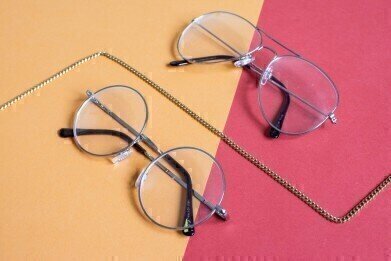News & Views
A Closer Look at Grinding (Abrasive Cutting)
Nov 03 2014
Can you think of a link between the Hubble Space telescope (HST) and a car’s stopping distance in the rain?
The HST relied on polished mirrors to collect and focus light accurately on its various detectors. And to form the smooth mirrored surfaces required hundreds of hours of grinding. To increase the adhesive properties of car tyres in the wet, manufacturers add nanoparticles — and one of the main techniques for manufacturing nanoparticles involves grinding. Tenuous link perhaps — but an intriguing topic.
Optical Grinding
Examples of optical grinding are all around us — from spectacles to car windscreens. Similar grinding techniques make the glass and plastic lenses and the mirrors on the HST: albeit with different levels of precision.
To produce spectacle lenses three main stages are used, which involve grinding the lens surface using a lapping tool and various abrasives. A lapping machine is simply a machine that allows two surfaces to be rubbed together to shape and polish one of the surfaces — in this case the lens. Traditional lenses were produced using three different grinding phases — rough grinding, smooth grinding and polishing — with each stage using a finer diameter grit. Typically each reduction in grit is by a factor of ten, so stage one uses 0.2 mm grit, stage two uses 0.02 mm grit and the final polish uses 0.002 mm grit. This would leave a surface with imperfections of about 0.002 mm or 2 microns. Since the human eye cannot resolve individual particles below 20 microns the surface appears polished to the human eye. The initial material removal in stage one is sometimes now carried out using diamond cutting tools to get the rough curvature of the lens.
How Smooth is That?
A similar process was used to shape the glass for the HST’s main mirror. A large glass blank was initially produced that was 94 inches in diameter and 13 inches think. It was of a laminated construction with two plates of glass sandwiching a honeycomb core to reduce the mirror’s weight and to allow for expansion and contraction in space.
From this blank the technicians used diamond tipped grinding tools to shape the front and back plates, reducing their thickness from 1.5 inches to 1 inch. The mirror’s surfaces were then hand polished using manual tools and checked for smoothness and curvature. A final laser polish resulted in a surface exceptionally flat — if the mirror was scaled up to the diameter of the Earth, any bumps on the mirror would be less than 6 inches high.
Grinding Nanoparticles
Nanoparticles are becoming increasingly important in many different types of industry. One method of producing nanoparticles is to grind larger particles down in size. But producing nanoscale particles creates its own problems. As the particle size gets smaller, the effect of electrostatic and molecular interactions becomes significant, so normal grinding practices cannot be used. Solutions to producing nanoparticles by grinding are discussed in Ultrafine Grinding with Laboratory Ball Mills.
Digital Edition
LMUK 49.7 Nov 2024
November 2024
News - Research & Events News - News & Views Articles - They’re burning the labs... Spotlight Features - Incubators, Freezers & Cooling Equipment - Pumps, Valves & Liquid Hand...
View all digital editions
Events
Nov 18 2024 Shanghai, China
Nov 20 2024 Karachi, Pakistan
Nov 27 2024 Istanbul, Turkey
Jan 22 2025 Tokyo, Japan
Jan 22 2025 Birmingham, UK




.jpg)














